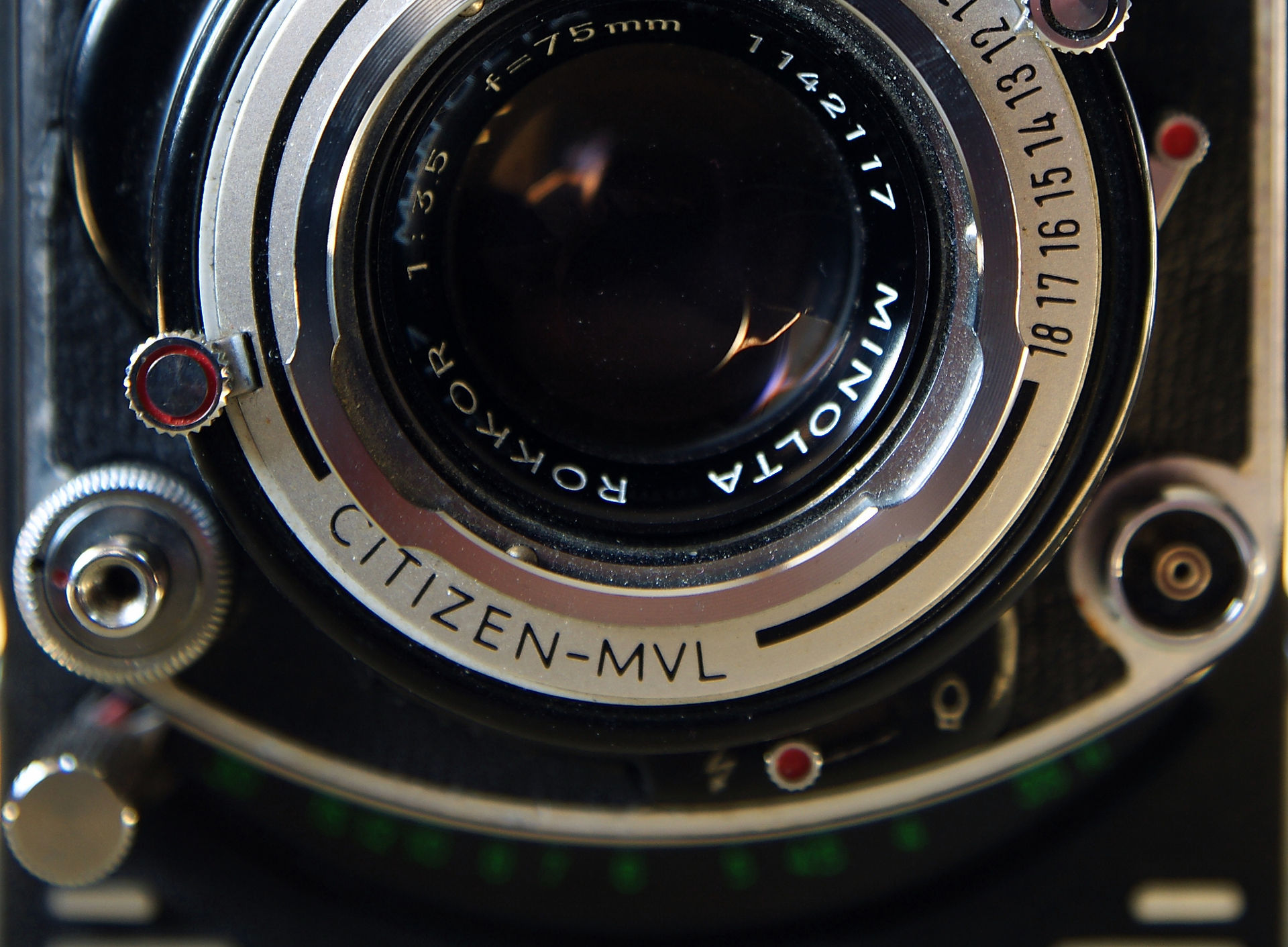
AUTOCORD : the Minolta's TLR
by Fred
The Autocords being as old as they are, the shutter supposed opening times may not be what they were.
There is a way to check the reliability of your shutter : the sound.
Indeed, the shutter is mechanical, it works by moving parts, they emit sound vibrations that you can record.
Operating mode :
Using a microphone and an appropriate software, record shutter releases from your Autocord.
The time table will help you calculate the opening time for each shutter release position.
For example :
Citizen MVL shutter from a 1963 RG-2, shutter position at 1/125 sec.

At the top of the image is the timeline in sec.
Here, the time scale has been enlarged 30 times, the smallest graduation is 0.0005 sec.
The image length represents 0.0320 sec (7.4820-7.4500 = 0.0320).
For car racing fans, it's often the gap between the first two cars on the starting grid.
The left side of the image corresponds to the amplitude scale of the sound, it can also be enlarged or narrowed.
Consideration :
Let's think about what happens in a shutter : arming puts a spring in tension; a lever releases the energy of the spring and transmits it to a group of five metal blades which move from one position to another and return to their initial position after a possible waiting time determined by a clock system.
Observation :
In addition to the sinusoidal pattern, you may notice several amplitude variations and five distinct sinusoidal vertices.
The first vertex corresponds to the energy liberating mechanism triggering.
The second vertex corresponds to the start of the blades which begin to open.
The third vertex corresponds to the arrival of the blades at the end of the path, the shutter is then open.
The fourth vertex corresponds to the start of the blades which begin to close.
The fifth vertex corresponds to the arrival of the blades at the end of the path, the shutter is then closed.
The interval between the 3rd and the 5th vertex corresponds to the shutter opening time.
The following picture shows you these different periods.

Measures :
After recording the operation of about fifteen Autocords shutters, I noticed :
-) the triggering time is always the same, ie 0.0014 sec (yellow arrows),
-) the blades opening time is always the same, ie 0.0025 sec (green arrows),
-) the blades closing time is always the same, ie 0.0025 sec (red arrows).
With such movement times (0.0050 sec for opening and closing), you will easily understand why central shutters are limited to 1/500 sec.
It remains to determine how long the blades stay open to find out if your shutter is reliable.
Expression of results :
For a 1/125 sec trigger, the opening time should be 0.0080 sec.
In this example, the opening time is estimated at 0.0115 sec (blue arrows), which equals 1/87 sec.
It is closer to 1/100 sec or 1/90 sec i.e. a difference of +0.4 EV. This information can be useful when you use a modern and precise cell to measure the light in order to adjust your camera at best before taking your picture.
Comments :
In practice, a difference of less than 1 EV (exposure value) remains acceptable because the negatives can absorb this difference. This is not the case with digital cameras.
A gap of more than 1 EV can become troublesome.
Example :
-) an Optiper MXS which opens 2.5 times slower than expected at all triggers (1/2 sec instead of 1/5 or 1/40 sec instead of 1/100), it's better to know;
-) a Seikosha MX which opens at 1/30 instead of 1/100 (-2 EV) and 1/40 instead of 1/250 (-3 EV) is better to be replaced or revised.
This does not mean that all Optiper MXS are slow or all Seikosha MX are rotten.
A small revision can wake the most sleepy shutters.
Conclusion :
Autocords are old cameras. They are between 50 and 60 years old (compared to 2017, year of writing this page).
So it seems normal to me that some shutters may have lost their vigor while others still have their full potential.
However, it is not a question of age but storage.
I have a good Crown II on a 1938 Minoltaflex and a poor Citizen MVL on a 1963 RG-3.
There are two ways to use an Autocord : take pictures or take dust.
In the second case, the state of the shutter does not matter.
In the first case, it may be interesting to know how it's running inside.
Would you want an accuracy check of your shutter? Contact me.